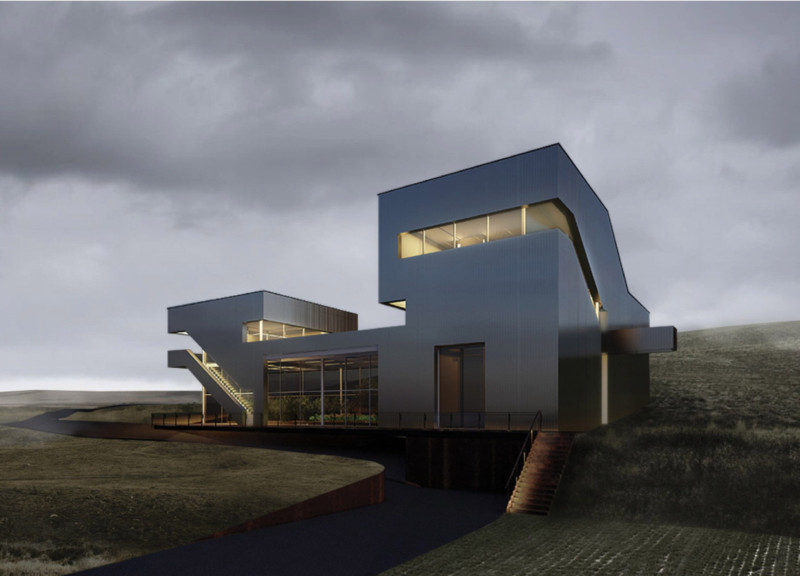5 key facts about this project
The primary function of the project is to house various communal activities, making it a versatile venue for gatherings, workshops, and recreational events. The layout reflects a thoughtful spatial organization that encompasses several distinct sectors, each dedicated to specific functions while maintaining a cohesive flow throughout the building. Users can easily navigate between public zones designed for social engagement and quieter, more private spaces that offer opportunities for individual reflection or focused activities.
One of the significant aspects of the design is its commitment to sustainability, which is evident in the choice of materials and construction methods. The project prominently features recycled concrete, which not only aligns with environmentally responsible practices but also provides durability. Corrugated aluminum sheets are used extensively for the facade, presenting a modern aesthetic while reflecting the surrounding landscape. Terracotta tiles contribute a tactile quality to surfaces, inviting interaction and enhancing the visual warmth of the structure. Additionally, expansive glass panels play a crucial role in connecting the interior with the exterior, allowing natural light to flood the interiors and creating a visual link between the indoor spaces and the natural landscape.
The integration of landscaping within the architectural design is another highlight of the project. The building is thoughtfully placed within an outdoor setting that encourages users to engage with nature. Paths and garden areas not only complement the structure but actively promote outdoor activities, fostering community interaction. This blending of architecture with landscape design underscores the importance of ecological responsiveness, demonstrating how built environments can coexist with and enhance their surroundings.
Unique design approaches taken in this project also include a careful consideration of circulation and accessibility. The implementation of an intuitive circulation strategy ensures smooth movement throughout the space. Public areas are designed to welcome diverse groups and activities, while private zones provide necessary respite from communal interactions. The integration of vertical connections, such as staircases and elevators, further enhances accessibility, ensuring that all users can navigate the building comfortably.
Architecturally, the project embraces a modern and minimalistic aesthetic characterized by clean lines and a thoughtfully curated material palette. The design adapts to seasonal changes, offering varied visual perceptions that enhance its presence within the landscape. This adaptability speaks to the building’s role not just as a functional space but as a living entity that responds to its environment over time.
In summary, this architectural design project serves as an exemplary model of how community-focused spaces can be effectively realized through careful planning, sustainable practices, and innovative design. The integration of various elements—from material selection to spatial organization—conveys a commitment to fostering social interaction and environmental stewardship. To gain deeper insights into the architectural plans, sections, and design ideas that shape this project, readers are encouraged to explore the presentation in detail. This exploration will provide a comprehensive understanding of how thoughtful architecture can influence and enhance community life.


























